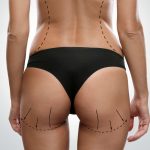What is Rhinoplasty?
Rhinoplasty is a surgical procedure that can alter the size, shape or proportions of your nose. It may also alleviate certain breathing issues like a deviated septum.
Your nose’s size and shape can have a major impact on how you appear. If it appears too big or small, or doesn’t match with the rest of your face, rhinoplasty may be necessary for improvement.
How It’s Done
Rhinoplasty is a plastic surgery procedure that alters and reconstructs the nose. You may opt for this cosmetic enhancement in order to improve the shape of your nose or address breathing difficulties.
Rhinoplasty can be completed as either an outpatient procedure or in the hospital setting, usually under sedation; however, some people require general anesthesia for this task.
Your doctor will carefully separate the nasal skin from its soft tissues, then adjust them as necessary to create the desired aesthetic. Finally, they’ll close up any incisions with tissue glue to hold your new nose in place while it heals.
A surgeon may also use bone-scraping rasps (files) to refine your corrections. These rasps help make your nose straighter and more aesthetically pleasing. You may experience some swelling after surgery, but this is normal; usually it goes away on its own after a few weeks.
What You Can Expect
Rhinoplasty is a surgical procedure that alters the size, shape and proportion of your nose. It may improve nasal shape, correct deformities or solve breathing issues.
Your doctor will make subtle but noticeable modifications to the bones and cartilage supporting your nasal structure during this procedure. As a result, you’ll see subtle yet noticeable improvements in how your nose appears and functions.
Your surgeon and you may decide to perform a second surgery to make further corrections. These minor corrections are usually done under local anesthesia for added comfort.
Swelling that occurs during recovery is an expected part of the process. On average, it takes 12 to 15 months for your nose to fully heal.
After rhinoplasty, you should refrain from any activities that may exacerbate swelling and bruising. These include bending over, lifting objects or picking up small children or pets. Additionally, for the first few weeks after surgery, try sleeping on your back or recliner.
Preparation
Rhinoplasty is a plastic surgery procedure that can enhance the size, shape and contour of your nose. It may be performed to correct bumps, narrow nostril width, alter the angle between your nose and mouth, or correct injuries or birth defects that affect breathing.
A consultation for rhinoplasty is an integral step in the preparation for your procedure. Your doctor will conduct a comprehensive physical exam to identify your individual facial proportions and tissue structure, then craft an individualized treatment plan just for you.
Your doctor will review your medical history, including any nasal surgeries, obstructions or medications you are taking. They also take into account how rhinoplasty surgery could potentially impact breathing afterward.
If you are thinking about having a rhinoplasty, the best way to prepare is by taking time to find an experienced specialist who listens carefully and understands your goals and preferences. A qualified surgeon should spend the entire consultation answering all of your queries and making sure you feel at ease throughout the procedure.
Recovery
Rhinoplasty is a delicate operation that necessitates meticulous precision. While the recovery period can be lengthy, with enough patience and time you’ll soon be on your way to appreciating your new nose!
After surgery, it’s important to rest as much as possible. In the initial days following your operation, you may experience bruising, swelling and congestion.
Swelling will subside over several weeks as your rhinoplasty heals, with swelling decreasing more rapidly at the bridge and upper parts of your nose due to thinner skin than at the nasal tip.
You may experience asymmetry in the swelling, where one side of your nose appears more swollen than the other. This is normal and only your doctor can determine if there’s an underlying issue.
Keep your head elevated as much as possible, especially while sleeping, to facilitate blood flow and prevent additional bruising or swelling. Avoid lifting weights or other activities that could dislocate your nose.





